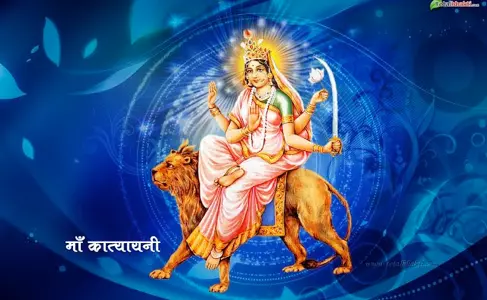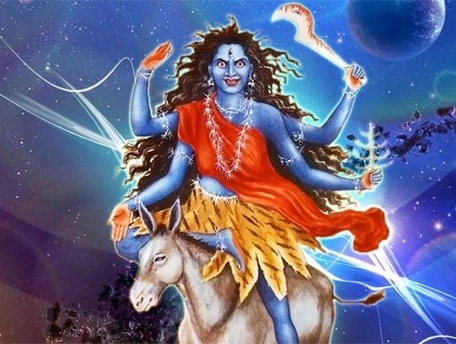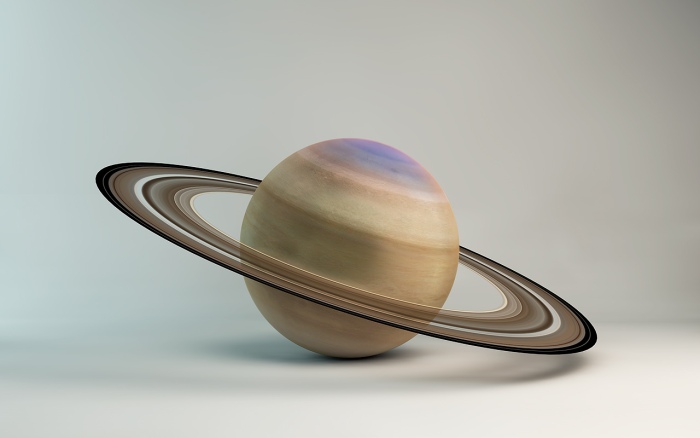Bo is just a sweetheart #shorts #onehappyassfarm #farmlife #donkey #resc... https://youtube.com/shorts/2eQCS8xL_O0?si=bTRuK_vVdUcLhJXp
Dawwe ❤️
2 Likes
Bo is just a sweetheart #shorts #onehappyassfarm #farmlife #donkey #resc... https://youtube.com/shorts/2eQCS8xL_O0?si=bTRuK_vVdUcLhJXp
Dawwe ❤️
Barney time is the best! #shorts #donkey #onehappyassfarm #pets #cutepet... https://youtube.com/shorts/6r0taTXhI78?si=sQsIOTujkcZKcfYS
Awww 🥰
Barney hugs are the best #shorts #farmlife #shortvideo #animals #donkey ... https://youtube.com/shorts/Js81VMjQFfk?si=emENC2CFyhHl6NHU
Dawwe ❤️
Pure love <3
https://www.youtube.com/shorts/EMOOngDPtsw
Wildflower said I got you Fancy #shorts #fancy #onehappyassfarm #funnyan... https://youtube.com/shorts/ECGFeDEp2W8?si=QNhpLJ0wVw_rV8tj


7th Day of #Navratri: Colour - #RoyalBlue
On the seventh day of Navratri, devotees honor #Goddess #Kalaratri, a fierce form of Goddess #Durga, by wearing #royal #blue. This color symbolizes richness, tranquillity, and the #divine #grace associated with Kalaratri's protective energy.
Symbolism: Royal blue represents power and calmness, embodying Kalaratri's strength while promoting #inner #peace among her devotees.
#Health and #Wealth: The color enhances health, wealth, and #strength, encouraging devotees to feel confident and empowered during their worship.
#GoddessKalaratri
Goddess Kalaratri is depicted with a dark complexion, riding a #donkey, and holding weapons that symbolize her fierce nature. She is known for #destroying #evil forces and bringing light to darkness. Her name signifies the end of darkness and ignorance, making her a powerful figure in Hindu mythology.
Royal Blue (Day 7): Royal blue is a colour for Goddess Kaalratri's worship. The richness and calmness are symbolized by this color. This colour is believed to enhance health, wealth, and strength among the devotees.
Pet donkey found 'living best life' with elk, five years after escape - BBC News https://www.bbc.com/news/articles/cjjje07x35do.amp
Just because we practice traditional Chinese medicine, doesn't mean we condone animal cruelty, so we are happy that African Heads of State and Government recommend a continent-wide ban on the slaughter of donkeys for their skin.
There are many alternatives to animal products, including different herbal medicines, foods, qi gong, moxa and even acupuncture. Chinese medicine has a very long and very noble history, and has always adapted to the needs and customs of the times. It can do without products that are not ethical to use in the 21st century.
https://www.bbc.com/news/science-environment-68335851
#donkey #Ejiao #chineseherbalmedicine #chineseherbs #herbalmedicine #sustainability #TCM #acupuncture
Video filmed from a donkey cart shows the extent of the destruction in Khan Younis in the south of Gaza. Subscribe to our channel http://bit.ly/AJSubscribeF...#AlJazeera #AlJazeeraEnglish #Attack #Bombardment #Donkey #Gaza #Israel #KhanYounis #SouthGaza #SouthernGaza #Transportation #alJazeera #aljazeeraEnglish #aljazeeralive #aljazeeravideo #aljazeeraEnglish #aljazeeralatest #aljazeeralive #aljazeeralivenews #latestnews #newsheadlines
Donkey cart tour shows destruction in south Gaza | AJ #shorts
#Happy #Navaratri Day 7 – #Saturn

As the nine nights represent the nine planets, we will be focussing on Navaratri and the nine planets with an account of one or another the planets for nine nights. For the seventh night of Navaratri, we will take the planet #Saturn. The colour for the seventh day of Navaratri is grey, so we scribe in #GREY for this seventh day observance of Navaratri. The #Goddess is #Kalaratri.

Today is the seventh day of the Navaratri celebrations which are held for nine nights. All festivals are meant to remind mankind that they should cultivate noble qualities by engaging themselves in activities beneficial to one’s own self and society. Sai Baba made this reference to Navaratri and the Nine Planets:
As part of Navaratri celebrations, people worship different forms of divinity. You should develop sacred feelings and experience divinity. What is the inner meaning of Navaratri celebrations? These nine nights represent nine planets. Each planet has its own significance. However, these planets are not outside, they are within. If your feelings are impure and unsacred, the result also will be the same. You are responsible for the good and bad you think and experience.
Saturn
Many consider Saturn as terrifying among the planets! It is said that all beings fear him for he rules bereavements and misfortunes. He is master of sudden reversals, so thorough that one’s name may well be forgotten among the annals of mortals. His gaze (drishti) is directed downwards for it is utterly destructive. There is a tale of Parvathi wanting a new abode in Kailash, and when Shiva (finally) granted the wish for an abode, Lord Brahma demurred and told, “Not wise, not wise!”, for he could sense the gaze (drishti) of Saturn would bring matters to grief. Shiva went to ask Saturn/Shani to avert his gaze from the new house. To cut a long story short, there was misunderstanding of the signals, Shiva beat his drum (dhamaru) (because he was doing the Tandava dance for Saturn), Parvati misunderstood the message and burned the house down. The moral of the story is that none may escape the drishti of Saturn.
Lord of the sinews, the West and Saturdays, his constellations are Capricorn (Makara) and Aquarius (Kumbh). He is Lord of three Nakshatras, Pushya, Anuraada and Uttara Bhadri. He is also known as the Slow, the Son of the Shadow, the Angular, the Black, the Endless, the End-Causer, the All-Devouring, the Steady, the Controller, the Famished, the Emaciated. His name in Sanskrit is Shanicharaya, “the slow-moving preceptor, the teacher who moves slowly”. Saturn has the slowest movement among the visible planets.
Traditional matters associated with Saturn are disease, death and the dying process – all of these are human and inescapable – the cause of death is birth. One of the main tasks of Saturn/Shani is said to be the cause of disenchantment – and therefore detachment from the ephemera, the fleeting, pointless, meaningless distractions and prattle of life.
Goddess Kalaratri
Goddess Kalaratri, also known as Mother #Kaali, is the seventh form of Goddess #Durga. Devotees worship her on the seventh day of Navaratri. They seek her blessings to eliminate all troubles from their lives.
This form of Durga is believed to destroy all demons, ghosts and negative energies. She is also believed to be the destroyer of time and death. Although, intimidating in appearance, Goddess Kalaratri is benevolent towards all worshipers.
There are many mythological stories that tell us about the transformation of Goddess Durga into Goddess Kalaratri. According to the most common legend, two demons Shumbha and Nishumbha invaded and defeated the realm of demigods. The demigods prayed to Goddess Parvati for help. Parvati readily transformed herself into Goddess Chandika, to battle with demons on behalf of all devas (gods). Goddess Chandika (also known as Chamunda) transformed herself into Goddess Kalaratri and killed both these demons. Goddess Kalaratri fought another demon called Raktveej and kept drinking his blood till he was completely dead, causing her tongue to appear blood-red.
Her vehicle is the #donkey; she has four arms and a blood-red tongue. Goddess Kalaratri is generally portrayed in a dark colour (usually dark blue) and appears to be somewhat wild-looking and threatening. Two arms are holding sabre and lance for slicing off heads; her other arms are held up on abhaya (protection) and varada (blessings, boons) for her devotees.
Saturn and the Feminine
When we look to Saturn we think duty, discipline, responsibility, doing things slowly and getting them right and advancing in life, slowly, carefully. Consider that these are activities Mothers, wives and sisters impart to us as we journey through life. Love that is given by the feminine principle is bounded by discipline and responsibility and considers the long term goal: true humanness. True humanness is a life informed by life-enhancing values, feelings, thoughts and behaviour. Therefore mothers – and all who embody the feminine – take up their task with duty, discipline and responsibility. This love is not dependent on like nor dislike, giving and receiving. The love that the feminine gives – informed by the qualities and and energy that Saturn gives – sees beyond like and dislike, differences between things and focuses on the end goal. True humanness, which forges new higher expressions of life even in the midst of life’s seeming dissolution.
Significance of Navaratri
“The Navaratri festival should not be observed as a festival for worshipping the consorts of Vishnu, Shiva and Brahma. These goddesses symbolise divine potencies. All these potencies are derived from Vishnu. The entire cosmos is a manifestation of the myriad forms of Vishnu. People must recognise this oneness underlying the different forms. All beings breathe the same air as their life-breath. Likewise all the five basic elements are the stuff of nature. But in the Para-Tattwa (the Supreme Principle, the Divine), these do not exist. The elements are mortal. The Divine is immortal. To proceed from the mortal to the immortal, the easiest means is the cultivation of the Divine Love (Prema).
The heart is like a sky wherein the clouds in the form of thoughts hide the Buddhi (the intellect) and the mind representing the sun and the moon. Vairagya (detachment) is the means to get rid of thoughts and desires arising from them. The Devi Puja performed during Navaratri is intended to get rid of worldly attachments and divert the mind toward God. There are four different qualities in man: humanness, the animal nature, demonic nature, and divine nature. When man follows the dictates of the body, he is a prey to his animal nature. When he is subject to the vagaries of the mind, he becomes demonic. When he is following the Atma (conscience), he is manifesting his divinity. When he is governed by all the three- the body, the mind and the Atma, he is human”. Sai Baba, SS, 12/92, p. 305
#myphoto, #TiereAmWegesrand No. 2, #Nordhessen, #TourDeChattengau, #ViaAdrana, #EderRadweg, #Chattengau, #FriedrichVonSchiller, #DieBürgschaft
#Tiere, #Esel, #animals, #donkey, #Foto, #photo, #Natur, #nature, #Radtour, #Fahrrad, #bike, #Hessen, #fedibikes, @fedibikes_de group, @fedibikes group